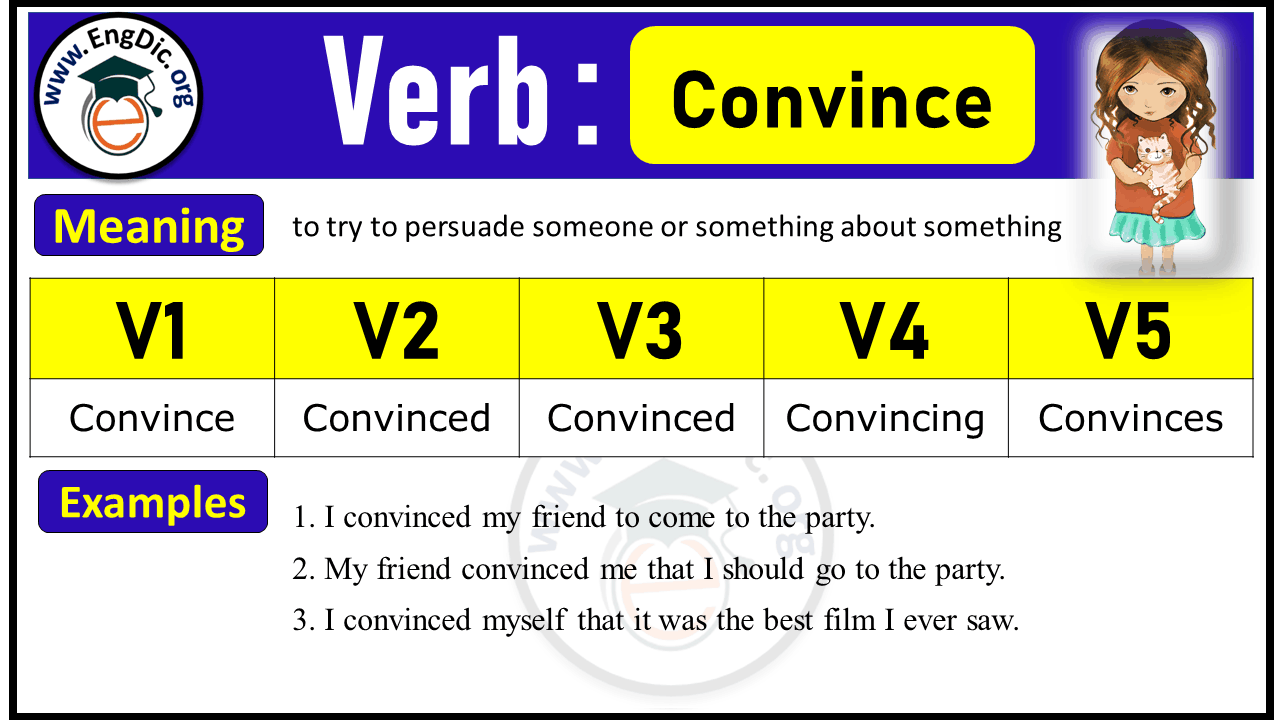Persuade Past And Past Participle Form V1 V2 V3 V4 V5 Form of Persuade
Have you ever found yourself wondering about the different forms of the verb “persuade”? Understanding verb forms is crucial for mastering English, especially when it comes to enhancing your communication skills.
Whether you’re writing, speaking, or simply trying to improve your grammar, knowing how to use “persuade” in various tenses can make your language more precise and impactful. We’ll delve into the past and past participle forms of “persuade”, alongside its V1, V2, V3, V4, and V5 forms.
By the end, you’ll have a clear grasp of how to use this versatile verb in any context. So, are you ready to boost your linguistic confidence and make your communication more effective? Let’s explore these verb forms and see how they can transform your language skills.
Verb Forms Of Persuade
The verb “persuade” changes in different forms. Understanding these forms helps in learning English. Here are the basic forms:
| Form | Example |
|---|---|
| V1 | Persuade |
| V2 | Persuaded |
| V3 | Persuaded |
| V4 | Persuading |
| V5 | Persuades |
Each form serves a different purpose. V1 is the base form. V2 and V3 are used for past actions. V4 is the present participle. V5 is for present simple tense.

Credit: engdic.org
Past And Past Participle Of Persuade
The verb persuademeans to convince someone to do something. In the past tense, it becomes persuaded. This form shows action that happened before. For the past participle, it is also persuaded. It often pairs with helping verbs like “has” or “have”. These forms are important in writing and speaking.
| Form | Example |
|---|---|
| V1 | Persuade |
| V2 | Persuaded |
| V3 | Persuaded |
| V4 | Persuading |
| V5 | Persuades |
Learning these forms helps in writing clear sentences. Use them to express past actions or ongoing activities.
Usage In Different Tenses
The word persuadein the present tense is simple. We use it to talk about now. Example: “I persuademy friend to play.”
The past tense of persuadeis persuaded. It tells us about actions that happened before. Example: “Yesterday, I persuadedmy sister to read.”
The past participle is also persuaded. We use it with “have” or “had.” Example: “She has persuadedhim to join the club.”
In the future tense, we say will persuade. It talks about what will happen. Example: “Tomorrow, I will persuademy teacher to help.”
Continuous tense uses persuading. It talks about ongoing actions. Example: “I am persuadingmy dog to sit.”

Credit: englishgrammarhere.com

Credit: englishgrammarhere.com
Conclusion
Understanding the verb forms of “persuade” is essential. It helps in improving your communication skills. The past form is “persuaded,” while the past participle is also “persuaded. ” Using these correctly enhances clarity in writing and speech. Remember, practice makes perfect.
Regular usage aids in building confidence. This knowledge can make conversations more effective. It can also enrich your language skills. So, keep practicing these forms. Soon, you’ll feel more comfortable using them. Language learning is a continuous journey. Stay curious and keep exploring.
You’re on the right track!





